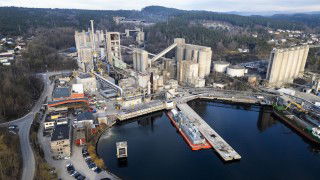As large volumes of common waste increasingly present a problem, China’s search for effective ways of disposing of this waste is on. With new landfill options facing opposition and causing controversy, the co-processing of municipal solid wastes (MSW) is becoming an increasingly-attractive option. Following examples in other countries, China is now actively seeking to increase its MSW usage in cement kilns, with producers such as Huaxin Wuxue and Sinoma’s Liyang having taken up the challenge. By Dahai Yan, Chinese Research Academy of Environmental Sciences, China, Kåre Helge Karstensen, Sintef, Norway and Zheng Peng and Zuguang Wang, Ministry of Environmental Protection, China.
One of the biggest problems facing China is the daily management of common large-volume wastes, ie sewage sludge from wastewater treatment plants, MSW and municipal solid waste incineration fly ash. The Ministry of Environmental Protection (MEP) estimated that in 2011, 3.2bnt of industrial wastes were generated, as well as up to 34Mt of hazardous wastes, around 160Mt of MSW, close to 6.5Mt of dry sewage sludge from wastewater treatment plants and 1.85Mt of MSW incineration fly ash.1,2
Jiang Jianguoa et al (2013) recently characterised the composition of MSWs in cities in southeast China, concluding that that they mainly consisted of organics, plastics, paper and textiles, with average shares of 47, 22, 12 and seven per cent, respectively. The average density and moisture content of the MSW were 274kg/m3 and 55 per cent, respectively.3
